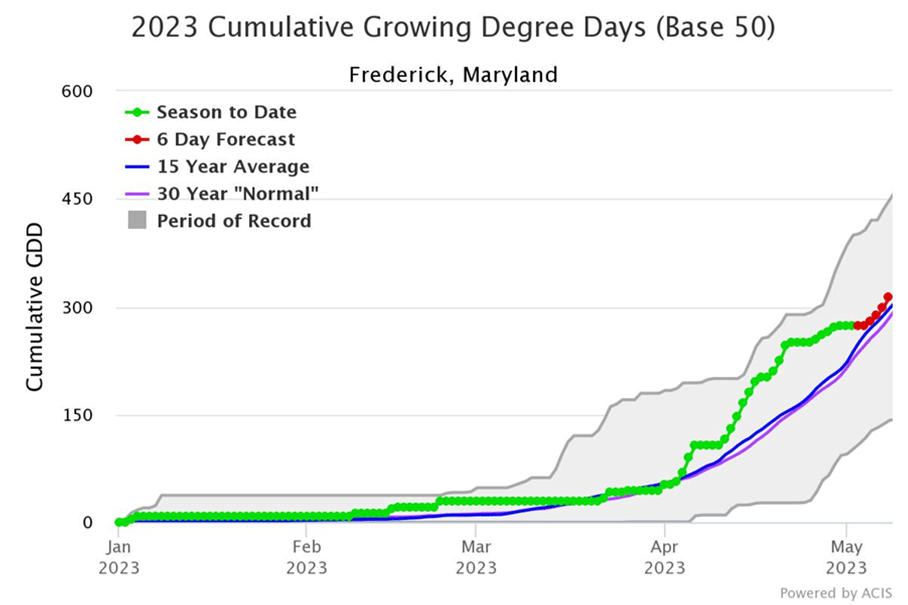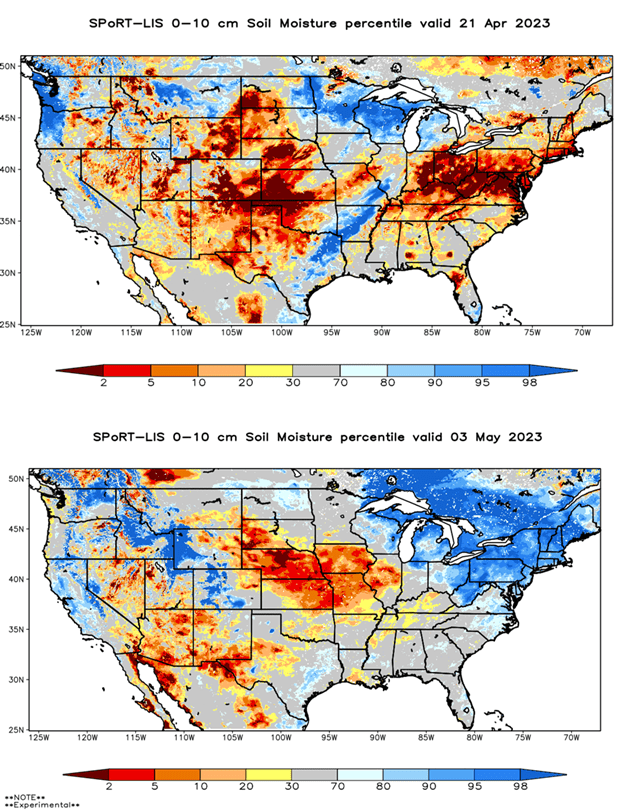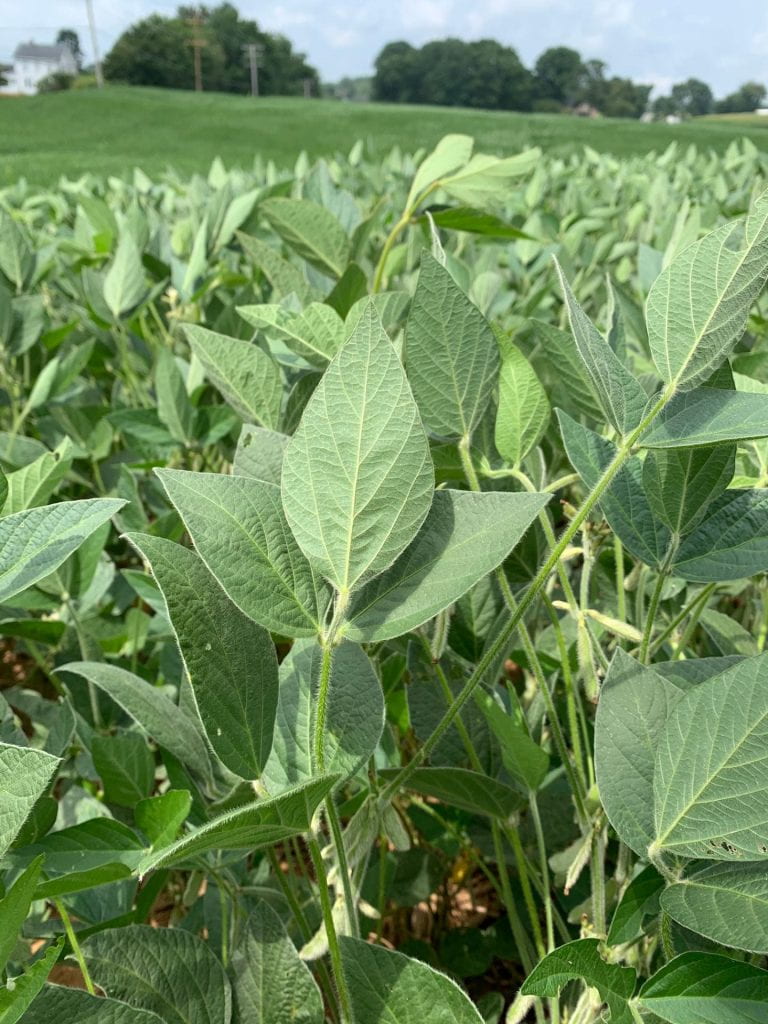Mark Townsend, Agriculture Agent Associate | mtownsen@umd.edu
University of Maryland Extension, Frederick County
It feels that most years we find ourselves finding something abnormal about the weather. This year is no exception and in some ways is even more different from our “abnormal-normal.”
Put lightly, the 2022-2023 winter was mild. There were only a handful of instances where we fell significantly below freezing and stayed there for more than a night or two. In fact, the average temperature from January to March of 2023 of 43.4 degrees Fahrenheit, was the second warmest on record in the 128-year NOAA Statewide Time Series dataset, just falling behind 2012 at 43.5 degrees Fahrenheit.
With this comes a significant accumulation of Growing Degree Days (GDD), a heuristic tool measuring the accumulation of heat through time which can be used to predict the development of crops and insects during the growing season. For review, GDDs are calculated by taking a simple average of the high and low daily temperatures subtracted from some base level. The base level is determined for each crop representing the lowest temperature the plant may still develop. For wheat and other small grains, the base temperature is often 32 or 40°F, while warm season crops like corn and soybeans have a GDD base temperature of 50°F.
Figure 1 is a cumulative line chart illustrating the accumulation of growing degree days since the start of the year in Frederick, MD. These data were obtained from the Cornell Climate Smart Farming (CSF) Growing Degree Day Calculator measured at a Frederick County, MD location, and a base temperature of 50 degrees (corn/soybeans base).

The chart illustrates the significant accumulation of GDDs in the last three months with the green line-and-dot figure poised well above the 15 year and 30-year averages. Of note is the rapid accumulation of GDDs in early to mid-April–illustrated by the rather large upward slope in a relative short period of time. Though we have not set any records, illustrated by the gray-bands above and below the data, we certainly came close in mid-April. This run-up coincided with abnormally dry conditions as well.
On the precipitation front, the region has generally been below average coming out of the winter months. Data from NASCE Prism Climate Group at Oregon State and USDA RMA (Figure 2) illustrates the precipitation anomaly, or difference in rainfall compared to the average from January to March for the continental US.

We may observe how the Mid-Atlantic held a range from 50-70% of average rainfall for the time period ending on March 31st.
The saying, “April showers bring May flowers” generally holds true in Maryland: on average and depending on the region in Maryland, we receive 3-5” of rainfall in April. This year, much of the region did not receive significant precipitation from April 1st to April 21st. Other regions only had to hold out another week to April 27th -28th to finally quench their thirst. These much-needed rains have brought much of the region at or near seasonal averages–bittersweet news for some crops that were in the rapid-development stage during the dry-period and for others that were “dusted-in” (planted into dry soil) in mid-April.
Speaking of; soil moisture has obviously reflected precipitation trends. Figure 3 are NASA Soil Moisture models based on satellite data. Figure 3 shows the model before our first rain on April 21st, while Figure 4 is the most recent model at the time of writing. We may observe how drastic the change in soil moisture has been in the last two to three weeks moving from a significant deficit (red areas, Figure 3) to nearly oversaturation (darker blue areas, Figure 4).

Though we have received much needed rainfall it has come at the expense of temperature and GDD accumulation. Looking back at Figure 1, we have leveled-off significantly in accumulation rate in the last few weeks of April and into May, and are approaching the 15 and 30 averages. Additionally, data from the Northeast Regional Climate Center (Figure 5 & 6) illustrate the GDD Difference from last year for the Mid-Atlantic and Northeastern United States by county modeled at 4/21 and 5/3, respectively.

The comparison of the charts again yields useful information indicating that we were about 10-14 days ahead of last year and 7-10 days ahead of the average on 4/21. The cool temperatures much of the region has felt has made up this difference as we sit about 3-10 days ahead of last year with generally little difference on average.
In terms of agronomics, there are many potential takeaways that one can derive from these observations. Though generally speaking, it may be useful to begin scouting for diseases in small-grain crops especially as we move into reproductive phases of crop development paired with the recent spell of cooler, wet weather. Though we may be outside of the typical window, powdery mildew tends to propagate well in these conditions; and though previous fusarium head-blight models have not indicated a potential concern, this has changed given recent cool, wet weather patterns. Pre and post-emergent damping off pathogens, such as Fusarium, Rhizoctonia, and Phythium, are also a concern under cool, damp soil conditions and can affect seedling stands of both corn and soybean, especially on non-treated seed. In any event, keeping-tabs on crop conditions during this period is generally best practice.
Similarly, it may prove useful to scout seedling crops for root damage from cool, wet weather loving pests like seedcorn maggot, wireworms, white grubs, corn rootworm, and slug. Additionally, a “flag-test” may be worthy to assess emergence of recently planted crops as germinating seed may be weakened by imbibing colder soil water.
Though as gloomy as looking back on recent weather may be, it does appear that drier and warmer weather is in the immediate forecast. Here’s to May flowers!


